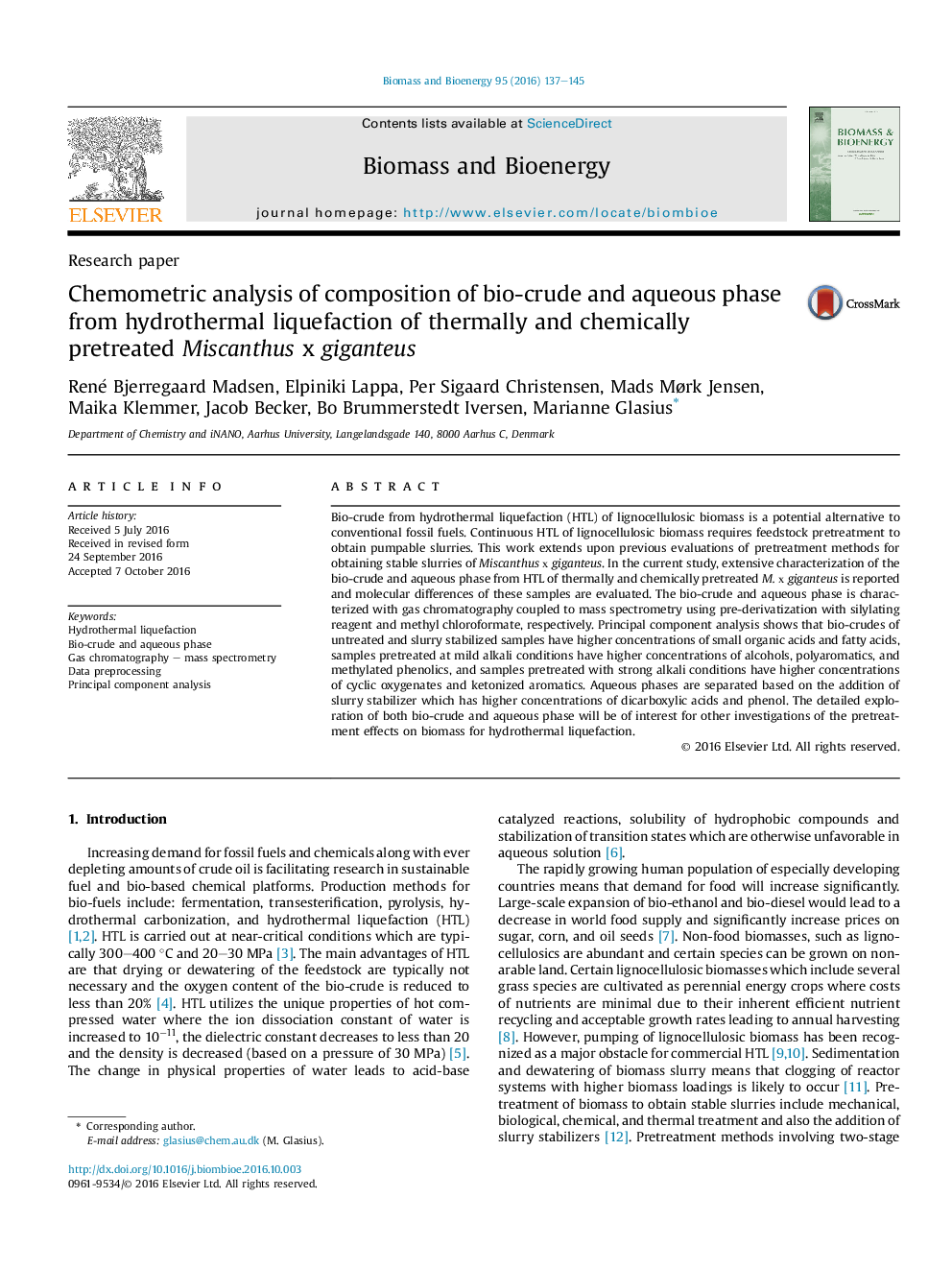| Article ID | Journal | Published Year | Pages | File Type |
|---|---|---|---|---|
| 4996365 | Biomass and Bioenergy | 2016 | 9 Pages |
Abstract
Bio-crude from hydrothermal liquefaction (HTL) of lignocellulosic biomass is a potential alternative to conventional fossil fuels. Continuous HTL of lignocellulosic biomass requires feedstock pretreatment to obtain pumpable slurries. This work extends upon previous evaluations of pretreatment methods for obtaining stable slurries of Miscanthus Ñ
giganteus. In the current study, extensive characterization of the bio-crude and aqueous phase from HTL of thermally and chemically pretreated M. Ñ
giganteus is reported and molecular differences of these samples are evaluated. The bio-crude and aqueous phase is characterized with gas chromatography coupled to mass spectrometry using pre-derivatization with silylating reagent and methyl chloroformate, respectively. Principal component analysis shows that bio-crudes of untreated and slurry stabilized samples have higher concentrations of small organic acids and fatty acids, samples pretreated at mild alkali conditions have higher concentrations of alcohols, polyaromatics, and methylated phenolics, and samples pretreated with strong alkali conditions have higher concentrations of cyclic oxygenates and ketonized aromatics. Aqueous phases are separated based on the addition of slurry stabilizer which has higher concentrations of dicarboxylic acids and phenol. The detailed exploration of both bio-crude and aqueous phase will be of interest for other investigations of the pretreatment effects on biomass for hydrothermal liquefaction.
Keywords
Related Topics
Physical Sciences and Engineering
Chemical Engineering
Process Chemistry and Technology
Authors
René Bjerregaard Madsen, Elpiniki Lappa, Per Sigaard Christensen, Mads Mørk Jensen, Maika Klemmer, Jacob Becker, Bo Brummerstedt Iversen, Marianne Glasius,
